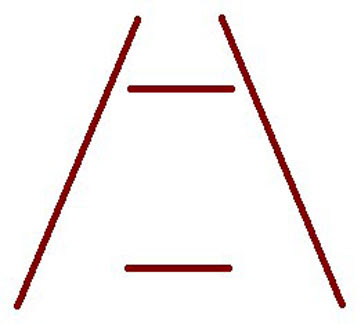
The viewer tends to percieve the top horizontal line as longer than the one below. This distortion effect occurs because there are two depth cues in the drawing that lead us to belive the top line is further away than the bottom one:
-linear perspective (diagonal line appear to converge, like railway lines)
-Height in horizontal pane (the top line is higher up in the drawing so it is interpretated as further away and the retinal image is seen as the same size so it must be bigger)
Comments
No comments have yet been made